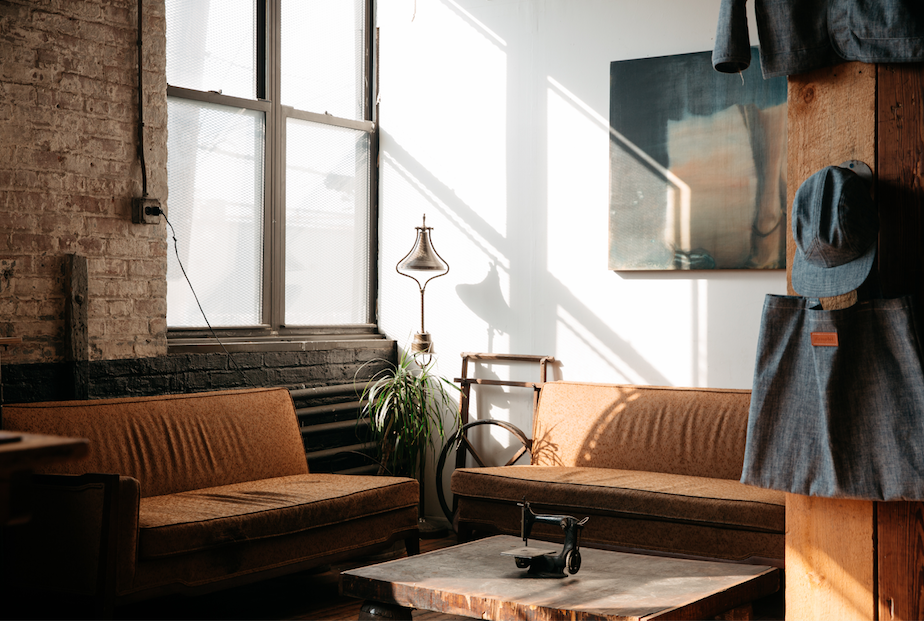Natural light
In simple terms, natural light is light that is generated naturally, the common source of which is the Sun. This is as opposed to artificial light, which is typically produced by electrical appliances such as lamps.
Natural light is received during daylight hours and coves the visible spectrum with violet at one end and red at the other. Not only is natural light beneficial for health, wellbeing and a good source of Vitamin D, it is required by plants to carry out photosynthesis.
Other sources of natural light include fire and, on clear nights, the moon.
Natural light can play an important role in creating a comfortable environment, helping to regulate the body clock, improve concentration and create a calm, tranquil setting. It can reduce the energy consumption of a building compared to artificial light and can also help prevent mould or mildew from developing in buildings since these spores thrive in darkness.
For more information, see How to maximise natural light.
Typically natural light is transmitted to the interior of a building through glazing such as windows, or through other openings. More complex 'daylight systems' collect natural light and deliver it deep into the heart of buildings. They use collectors in the roof to harvest light, then transport it to diffusers in interior spaces.
Exposure to too much natural light can be a problem for workers on a construction site, particularly during the summer, with the risks of sunburn, heatstroke, and glare obstructing vision.
A right to light is a type of easement referring to the right to receive sufficient light through an opening (such as a window), allowing ‘ordinary’ comfortable use and enjoyment of a dwelling, or ‘ordinary’ beneficial use and occupation of other buildings. The levels of acceptable light have not been objectively quantified and are instead assessed on a case-by-case basis by the courts.
For more information, see Rights to light.
[edit] Related articles on Designing Buildings
- Artificial lighting.
- Aspects of daylighting design covered by EN 17037.
- Brise soleil.
- Daylit space.
- Designing daylight solutions for commercial buildings.
- EN 17037 Daylight in buildings.
- Glare.
- Health and wellbeing impacts of natural and artificial lighting.
- Lighting.
- Lighting and health infographic.
- Lighting designer.
- Lighting and offices.
- Site layout planning for daylight and sunlight.
- Solar gain.
- Types of lighting.
- Types of building EN 17037 applies to.
Featured articles and news
Latest Build UK Building Safety Regime explainer published
Key elements in one short, now updated document.
UKGBC launch the UK Climate Resilience Roadmap
First guidance of its kind on direct climate impacts for the built environment and how it can adapt.
CLC Health, Safety and Wellbeing Strategy 2025
Launched by the Minister for Industry to look at fatalities on site, improving mental health and other issues.
One of the most impressive Victorian architects. Book review.
Common Assessment Standard now with building safety
New CAS update now includes mandatory building safety questions.
RTPI leader to become new CIOB Chief Executive Officer
Dr Victoria Hills MRTPI, FICE to take over after Caroline Gumble’s departure.
Social and affordable housing, a long term plan for delivery
The “Delivering a Decade of Renewal for Social and Affordable Housing” strategy sets out future path.
A change to adoptive architecture
Effects of global weather warming on architectural detailing, material choice and human interaction.
The proposed publicly owned and backed subsidiary of Homes England, to facilitate new homes.
How big is the problem and what can we do to mitigate the effects?
Overheating guidance and tools for building designers
A number of cool guides to help with the heat.
The UK's Modern Industrial Strategy: A 10 year plan
Previous consultation criticism, current key elements and general support with some persisting reservations.
Building Safety Regulator reforms
New roles, new staff and a new fast track service pave the way for a single construction regulator.
Architectural Technologist CPDs and Communications
CIAT CPD… and how you can do it!
Cooling centres and cool spaces
Managing extreme heat in cities by directing the public to places for heat stress relief and water sources.
Winter gardens: A brief history and warm variations
Extending the season with glass in different forms and terms.
Restoring Great Yarmouth's Winter Gardens
Transforming one of the least sustainable constructions imaginable.
























